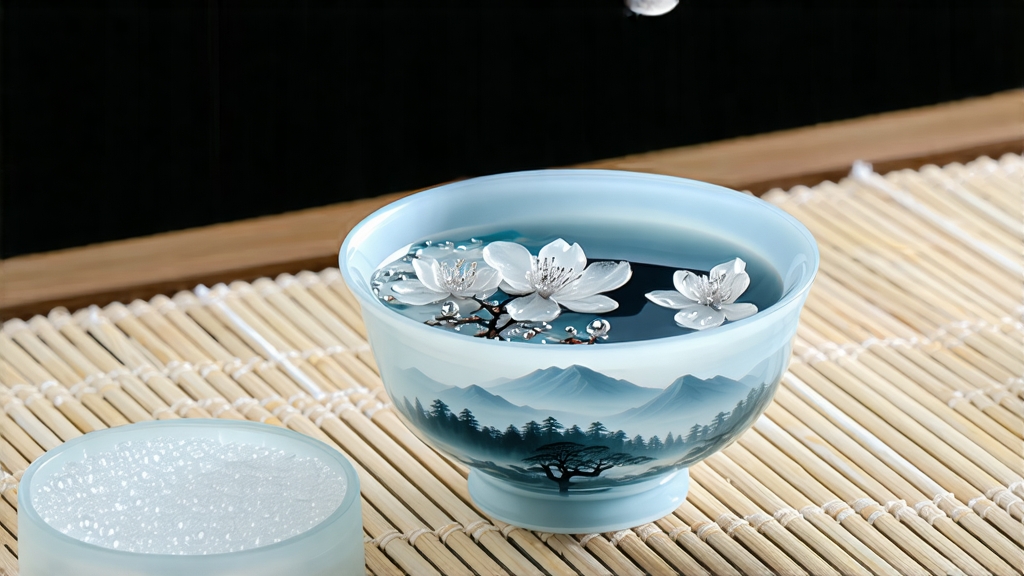
If green tea is the bright youth of Chinese tea and pu-erh its brooding sage, then Bai Hao Yin Zhen—literally “White Hair Silver Needle”—is the quiet poet who arrives at dusk and leaves before dawn, leaving only a trace of lunar perfume on the sleeve. Revered as the apex of white tea, Yin Zhen is not merely a beverage; it is a meditation on restraint, a lesson in how little needs to be done when nature itself is perfect. To understand it is to step into the cool mist of northern Fujian’s coastal mountains, where the air smells of pine, river reeds and the faint sweetness of unopened jasmine.
History: from imperial elixir to minimalist icon
The first written record of “white tea” appears in Song dynasty treatises (960-1279), yet those leaves were compressed cakes of light-coloured tea from the broader region, not the loose, down-covered buds we celebrate today. The birth of Yin Zhen as a distinct style is usually dated to the late 18th century, when tea merchants in Fuding County began selecting only the unopened leaf buds of the Da Bai cultivar, noticing that after gentle withering the buds retained a silvery fleece and brewed a liquor almost as pale as water, yet astonishingly fragrant. By the 1890s the tea had travelled along the Min River to Fuzhou’s treaty port, where foreign buyers christened it “Silver Needle” and paid twice the price of Keemun. Legend claims that the last empress dowager used the first spring picking to “wash” her eyes each morning, believing its cool essence preserved youth. Whether apocryphal or not, the story fixed Yin Zhen’s reputation as the most aristocratic of Chinese teas.
Terroir and cultivar: why Fuding tastes like moonlight
Authentic Bai Hao Yin Zhen comes only from two contiguous counties on Fujian’s northeast coast: Fuding and Zhenghe. Here the Taimu mountain range catches humid air from the East China Sea, creating morning fogs that filter sunlight and slow photosynthesis, allowing amino acids—especially L-theanine—to accumulate. The soil is lateritic granite, acidic and fast-draining, forcing tea roots to dive deep for minerals that later emerge as a subtle flint note in the cup. Only two cultivars are legally permitted for authentic Yin Zhen: Fuding Da Bai (“Big White”) and Zhenghe Da Bai. The former yields plumper buds with a higher bud-to-leaf ratio and a brighter, melon-like sweetness; the latter produces slimmer, more resinous buds with a quieter, hay-like depth. Between the two, Fuding Da Bai is generally deemed the nobler, commanding higher prices and the poetic nickname “tea of moonlight.”
Harvest calendar: the poetry of ten days
Yin Zhen is made only in early spring, typically between 15 March and 5 April, when the average daytime temperature hovers around 14 °C. Pickers rise at 4:30 a.m. to begin plucking at first light, because once the sun climbs above the fog the bud’s moisture level drops too quickly, making subsequent withering uneven. The standard is ruthless: one bud, no leaf, no stem, and the bud must be “mouse-tail” length—between 2.5 and 3 cm. A skilled picker gathers barely 500 g of fresh buds in a morning; it takes roughly 30,000 buds, or a full day’s work of five people, to yield 100 g of finished tea. The harvest window lasts only ten days: once the tea trees enter the “fish-leaf” stage and the bud begins to unfurl, plucking stops. Anything gathered later becomes Bai Mu Dan (White Peony) or Shou Mei, both delicious but lacking the needle’s aristocratic purity.
Craft: doing almost nothing, at the right moment
White tea’s minimalism is often misunderstood as “non-processing.” In reality the craft lies in managing water and air with the precision of a lacquer artist. The fresh buds are first spread on bamboo trays 2 cm thick and rested for two hours in a shaded corridor; this brief wilting reduces “field heat” and begins enzymatic oxidation. Next comes the decisive step: sun-withering. Trays are carried to a south-facing courtyard tiled with white porcelain that reflects rather than absorbs heat. Under the cool March sun the buds lose moisture gradually while endogenous enzymes convert lip